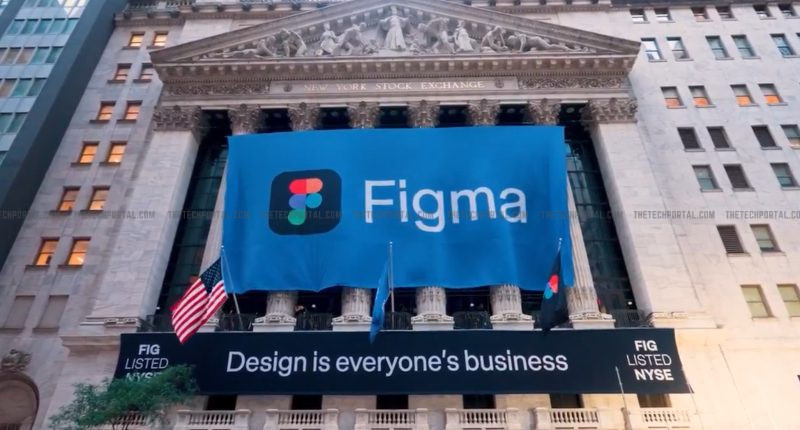Figma, the collaborative design software company, finally made its long-anticipated debut on the New York Stock Exchange under the ticker symbol “FIG”, setting record books ringing. At the time of writing, the stock price was already way past the $100 mark, valuing the company at nearly $44Bn. This, when Figma has already priced its initial public offering at $33 per share, nearly double of its upwardly revised expected range.
The offering raised $1.2 billion and values the San Francisco-based firm. A total of 36.9 million Class A shares were sold, including about 12.5 million new shares issued by the company, while the rest came from existing investors.
Notably, the debut price exceeded the company’s earlier guidance of $30 to $32 per share, which itself had been revised up from an initial range of $25 to $28. According to people familiar with the process, investor demand was intense, with the offering reportedly oversubscribed by a factor of 40. To facilitate efficient price discovery and capitalize on this enthusiasm, Figma structured its IPO as a modified auction, inviting prospective investors to submit not only how many shares they wished to buy but also at what price. This IPO comes just two years after a high-profile attempt by Adobe to acquire Figma for $20 billion was called off.
Founded in 2012 by Dylan Field and Evan Wallace, Figma rose to prominence by working on digital design as a real-time, browser-based experience. Its flagship platform allowed users to co-edit interfaces and visual materials simultaneously, much like Google Docs transformed word processing. This collaborative functionality (paired with ease of use and automation features)earned the company a foothold among enterprise and non-professional users alike. Figma currently has 13 million active users and serves 95% of Fortune 500 companies.
In recent years, the company has aggressively expanded its product portfolio. Since 2021, it has launched six new cloud-based tools, including three this year aimed at creating presentations, web content, and advertising materials. At its 2025 Config conference, Figma unveiled several AI-powered products, most notably Figma Make, which transforms natural language prompts into interactive design prototypes. Other AI-driven offerings include Figma Buzz for team communication and Figma Draw for intuitive sketching. In 2023, Figma introduced Dev Mode, designed to bridge collaboration between designers and developers. The company has also ventured into digital assets, reportedly investing $70 million into the Bitwise Bitcoin ETF and preparing to convert an additional $30 million in stablecoins into Bitcoin.
According to its updated prospectus, Figma generated between $247 million and $250 million in revenue for the quarter ending in June—up roughly 40% year-over-year. Operating income for the quarter was projected between a $500,000 loss and a $2.5 million profit, a turnaround from the $894.3 million loss recorded a year earlier, which was driven largely by stock-based compensation expenses.
Full-year 2024 revenue came in at approximately $749 million, marking a 48% increase, with gross margins near 91% and operating margins climbing toward 18%. Net losses for the year totaled $732 million. The March quarter saw revenue rise by 46% to $228.2 million, while net income more than tripled to $44.9 million. Figma’s IPO also involved secondary share sales by insiders and early investors. Dylan Field, who dropped out of Brown University to pursue Figma under the Thiel Fellowship, sold a notable tranche of shares but remains the company’s largest individual shareholder. He holds approximately 74.1% of voting rights. Among institutional backers, Index Ventures held the largest pre-IPO stake at 17%, followed by Greylock at 16%, Kleiner Perkins at 14%, and Sequoia Capital at 8.7% — all of whom participated in the offering by selling portions of their holdings.
The Tech Portal is published by Blue Box Media Private Limited. Our investors have no influence over our reporting. Read our full Ownership and Funding Disclosure →






